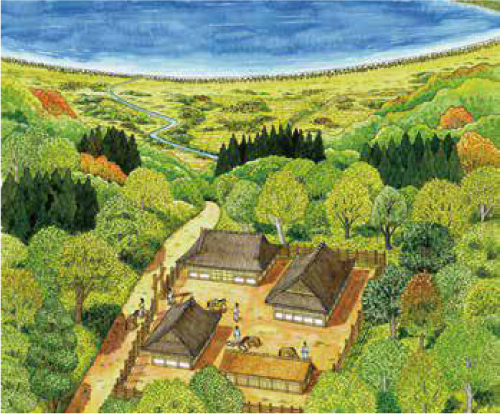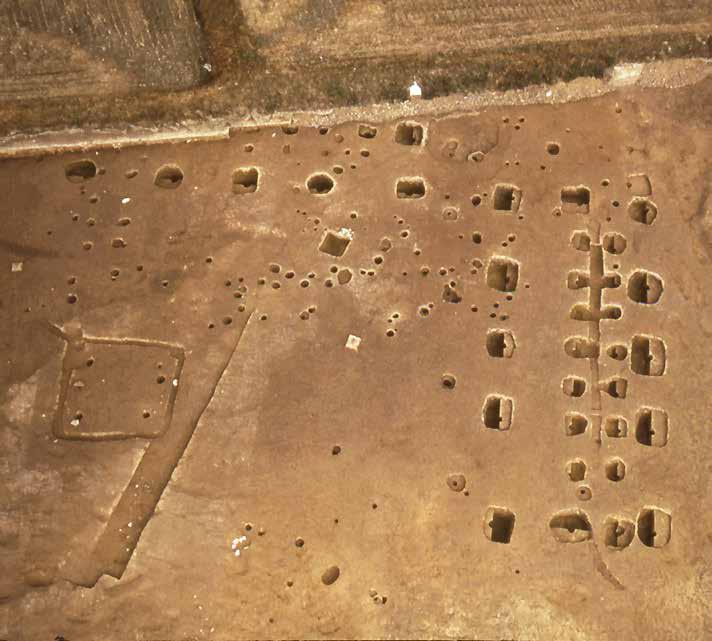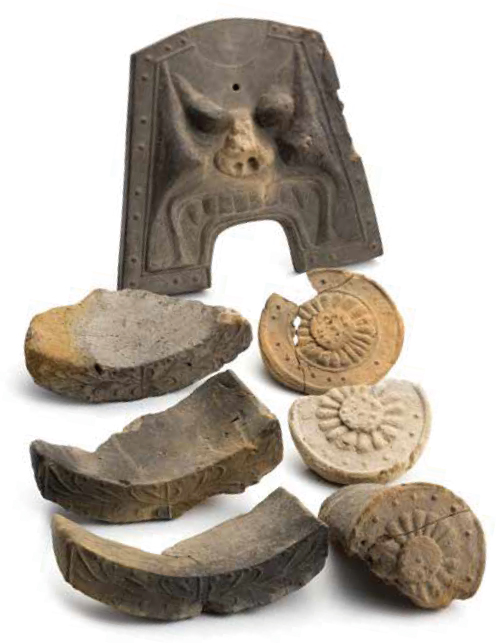- 特徴
- 所在地:福岡県宗市武丸
- 時代:奈良時代~平安時代(8世紀後半~9世紀前半)
- 内容:駅家跡か
武丸大上げ遺跡は、都と大宰府を結ぶ官道「西海道」につくられた駅家の跡と推定されています。 駅家とは、律令国家が制度化した駅伝制によりつくられた施設です。都と地方との迅速な連絡を可能とするため、駅馬と呼ばれる早馬を常備し、 30里(約16km)ごとに建てられました。また、大宰府と都を結ぶ官道沿いの駅家は、外国使節の往来にも利用されるため、瓦葺・白壁のしつらえが定められていました。

圃場整備をきっかけとして実施された1983(昭和58)年の発掘調査では、3棟の掘立柱建物が発見されました。そのうち2棟の柱穴は、 隅が丸い方形をしており、一辺の長さが1mを超える大型のものでした。このような柱穴は、古代の役所をはじめとする公的施設跡である官衙遺跡で多く発見されています。

武丸大上げ遺跡からは、大量の古代瓦が出土しています。これは、駅家が瓦葺だったという文献記録に合い、 巨大な柱穴が並ぶ遺構とともに、遺跡が駅家跡であると考えることができる証拠の一つです。 また、出土した瓦には、作られた時代に差が見られません。そのため、かつて武丸大上げ遺跡に造られた瓦葺建物は、 造られてから使われなくなるまでの期間が短く、瓦の葺き替えもされなかったことが考えられます。

醍蝴天皇が編纂を命じ、法律(律令)の施行細則を示した『延喜式』 (927年)には、山陽道から続く西海道のうち、筑前国に入って大宰府に至るまでの8駅 (獨見駅・夜久駅・嶋門駅・津日駅・席内駅・夷守駅・美野駅・久爾駅)が記されています。そのうち夷守駅は、福岡県粕屋町での発掘調査で発見され、白壁の痕跡も確認されました。
しかし、それより120年前の大同二(807)年官符では、同じ区間に駅家が9駅あったことが記され、この間に1駅が廃止されたことが分かっています。そして、嶋門駅は遠賀町島津に、 津日駅は福津市畦町にあったことが想定されていることから、武丸大上げ遺跡がこのとき廃止された駅家に当たるとの説もあります。
 はじめに
はじめに お問い合わせ
お問い合わせ